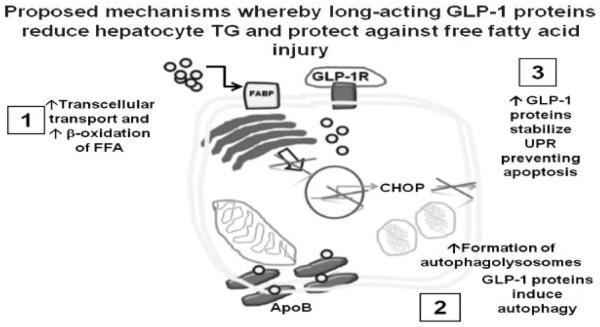Fig. 2.
Multiple potential roles for glucagon-like peptide 1 (GLP-1) and GLP-1 analogues in modulating hepatocyte fatty acid and lipid metabolism. Although there is controversy as to the specificity of a G-protein-coupled receptor (GPCR) for GLP-1 in hepatocytes (see text), it is now well-established that GLP-1 proteins enhance β oxidation of free fatty acids (FFAs) in steatotic hepatocytes. We have also demonstrated that GLP-1 analogues exendin-4 and liraglutide can stabilize the unfolded protein response (UPR) and mitigate the death pathway via apoptosis when endoplasmic reticulum stress overload occurs: iGLP-1 can protect hepatocytes from lipotoxicity. We have also demonstrated that liraglutide can increase macroautophagy (or lipophagy) to eliminate FFA stores by lysosomal degradation as assessed by autophagic flux.

